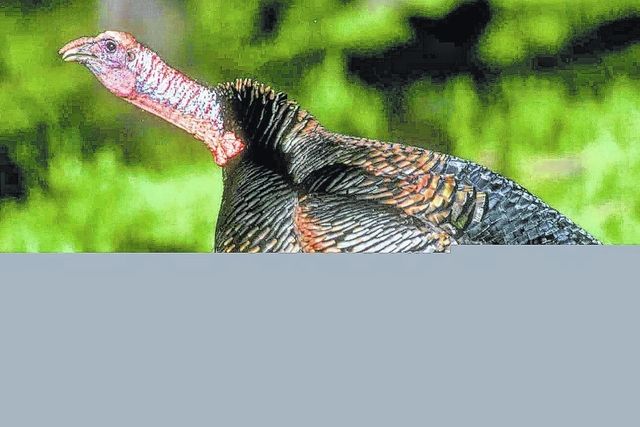Click here to subscribe today or Login.



Ned O’Haire is so passionate about the spring gobbler season that he’s used two weeks of his vacation time from work just to hunt one particular bird. For several seasons the Pittston resident didn’t miss a day.
But now, O’Haire has cut back — by his standards.
“Now I hunt about four to five days a week,” he said.
Spring gobbler seasons opens on May 2 and runs through May 30. While O’Haire intends to keep up his rigorous hunting schedule, he’s already been logging plenty of time in the woods scouting with hunting partner Wayne Grilz of Ashley.
And like most gobbler hunters, O’Haire and Grilz are listening and looking for two things during their scouting trips – gobbling and turkey sign.
O’Haire focuses his time walking ridges and south-facing slopes searching for roosting areas and listening for birds.
“I look for concentrations of droppings and feathers around the base of a tree to find where they’re roosting,” O’Haire said. “And then I’ll go back there at first light and listen.”
But he won’t call.
O’Haire said it’s not necessary to call to a gobbler while scouting, and doing so could make a bird apprehensive to respond after the season starts.
Grilz agreed and said he witnessed how the move could backfire when he first started hunting gobblers years ago.
“In the past when I scouted and called, I had them answer and they come in and there you are,” Grilz said. “That bird will spook and he’ll be call-shy.”
Still, it’s almost inevitable not to encounter a call-shy gobbler, especially when hunting on public land. When O’Haire finds a gobbler that has been talked to by other hunters a bit too much, he doesn’t give up.
There are ways, he said, to get the bird to respond.
“You’ve get to set up close to where he’s roosted and call very lightly,” O’Haire said. “Stay away from the hard yelps and cutting, and stick to the purrs and soft clucks.”
According to the Pennsylvania Game Commission, the statewide turkey population last spring was estimated at 235,000 birds, above the five-year average of 169,000. Last spring season hunters harvested 41,000 turkeys, up from the 2013 harvest of 34,158.
There has been some concern among hunters about the impact of the winter on turkey numbers and the willingness for gobblers to call, but PGC wild turkey biologist Mary Jo Casalena said it doesn’t seem to be an issue.
of the 288 birds that the PGC fitted with satellite transmitters over the last five years, none have died due to winter conditions. And as far as gobbling activity, Casalena said it could be down in areas with high proportions of jakes or older gobblers that might not call much.
“Just because you’re not hearing much gobbling doesn’t mean they’re not there, and hunters anywhere might be pleasantly surprised by the outcome of a hunt, even if there’s not a lot of calling activity leading up to it,” Casalena said. “Prior to the season gobblers might be quiet because hens are still with them. Once the hens go off to incubate their eggs, gobblers intensify their calling to attract other hens. We time the season to begin, on average, when the majority of hens are incubating and gobbling intensifies.”
That’s why O’Haire and Grilz said it’s critical to be patient while hunting gobblers.
“By 9 a.m. those hens leave to go to their nests and the gobblers might start gobbling again,” O’Haire said. “It’s like a second peak of gobbling activity, with the first occurring at daybreak.”
Considering hunting hours for the first two weeks of the season (May 2 through May 16) are one-half hour before sunrise until noon, followed by all-day hunting for the final two weeks, there is plenty of time for hunters to be patient and listen for a bird.
Still, the all-day hunting concept, or the option to harvest a second gobbler by purchasing a second tag, doesn’t appeal to Grilz and O’Haire.
“I understand they’re doing it to try to recruit more hunters, but I’m old school. I hunt from daybreak until noon and then call it a day,” Grilz said.
O’Haire said the all-day hunting and two-bird limit could result in excessive pressure on gobblers in some areas.
“In this state, because of hunter numbers, I don’t think it’s a good idea,” he said. “It’s putting too many guys in the woods for too long, and it’s a big disturbance.”
But that won’t lessen O’Haire’s enthusiasm for the spring season. While his goal is to bag a gobbler, O’Haire said there are a lot of other benefits that come with hunting in the spring.
“I just like the way nature changes from the beginning of the season to the end. You see different flowers blooming, watch newborn wildlife and everyday encounter something different,” he said. “I like being in the woods at daybreak watching a new day start and that’s why I do it. Killing a gobbler is just a bonus.”





